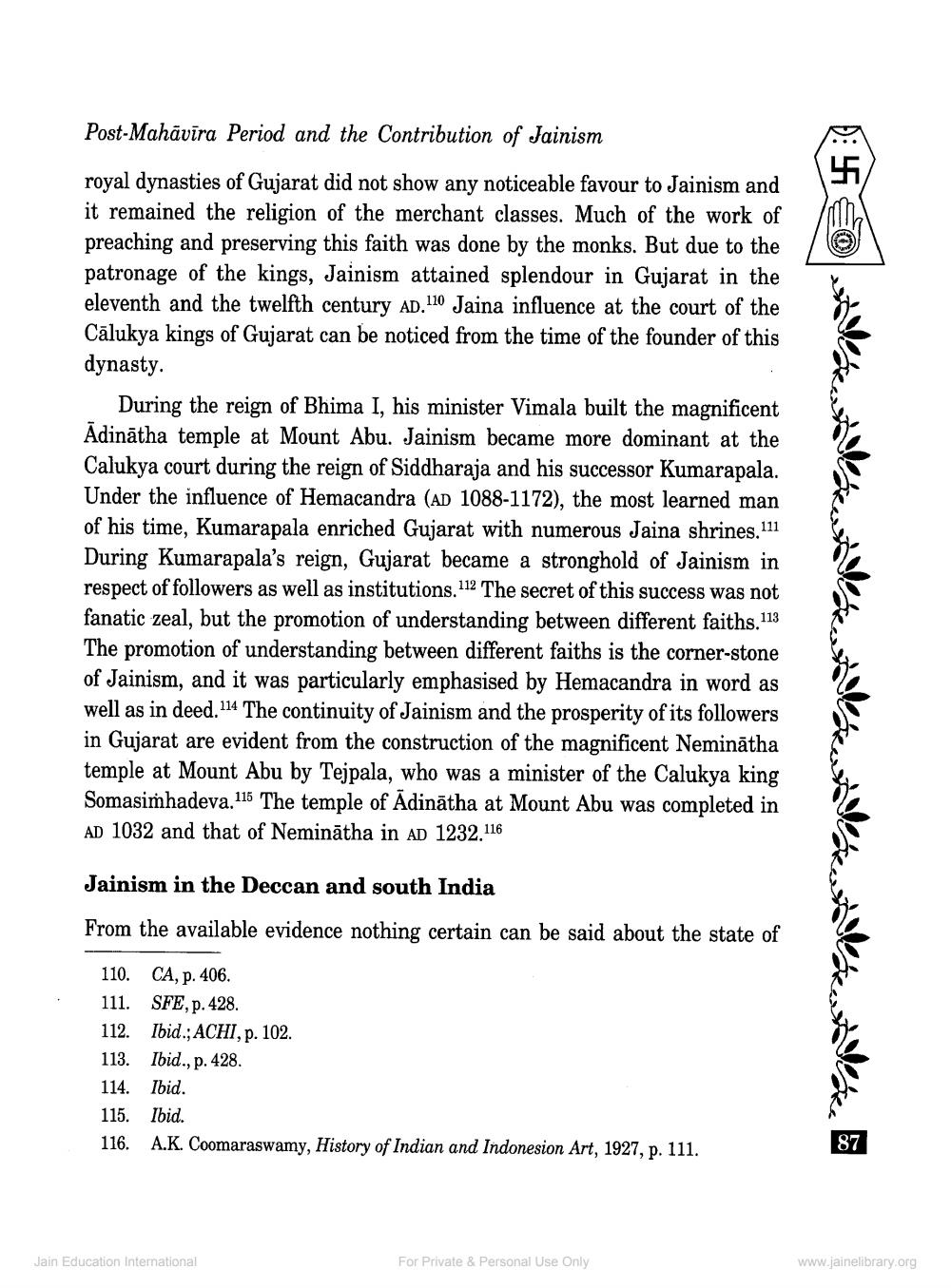________________
Post-Mahāvīra Period and the Contribution of Jainism royal dynasties of Gujarat did not show any noticeable favour to Jainism and it remained the religion of the merchant classes. Much of the work of preaching and preserving this faith was done by the monks. But due to the patronage of the kings, Jainism attained splendour in Gujarat in the eleventh and the twelfth century AD. 110 Jaina influence at the court of the Cālukya kings of Gujarat can be noticed from the time of the founder of this dynasty.
During the reign of Bhima I, his minister Vimala built the magnificent Adinātha temple at Mount Abu. Jainism became more dominant at the Calukya court during the reign of Siddharaja and his successor Kumarapala. Under the influence of Hemacandra (AD 1088-1172), the most learned man of his time, Kumarapala enriched Gujarat with numerous Jaina shrines. 111 During Kumarapala's reign, Gujarat became a stronghold of Jainism in respect of followers as well as institutions. 112 The secret of this success was not fanatic zeal, but the promotion of understanding between different faiths. 113 The promotion of understanding between different faiths is the corner-stone of Jainism, and it was particularly emphasised by Hemacandra in word as well as in deed. 114 The continuity of Jainism and the prosperity of its followers in Gujarat are evident from the construction of the magnificent Neminātha temple at Mount Abu by Tejpala, who was a minister of the Calukya king Somasimhadeva. 115 The temple of Adinātha at Mount Abu was completed in AD 1032 and that of Neminātha in AD 1232.116
Jainism in the Deccan and south India
From the available evidence nothing certain can be said about the state of
110. CA, p. 406. 111. SFE, p. 428. 112. Ibid.; ACHI, p. 102. 113. Ibid., p. 428. 114. Ibid. 115. Ibid. 116. A.K. Coomaraswamy, History of Indian and Indonesion Art, 1927, p. 111.
Jain Education International
For Private & Personal Use Only
www.jainelibrary.org




